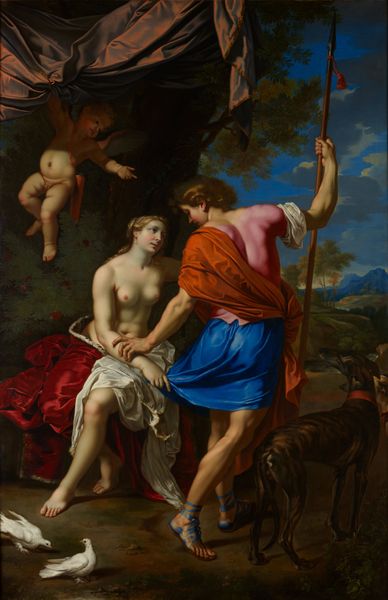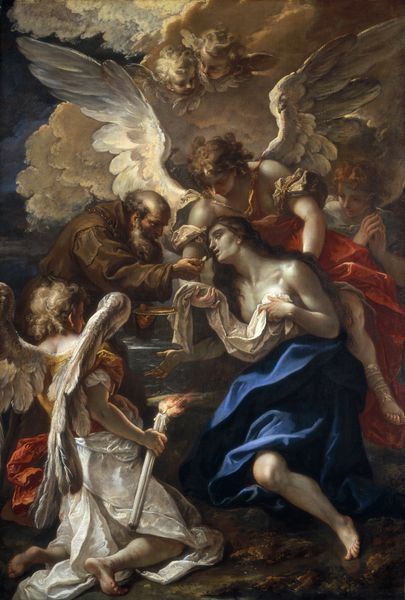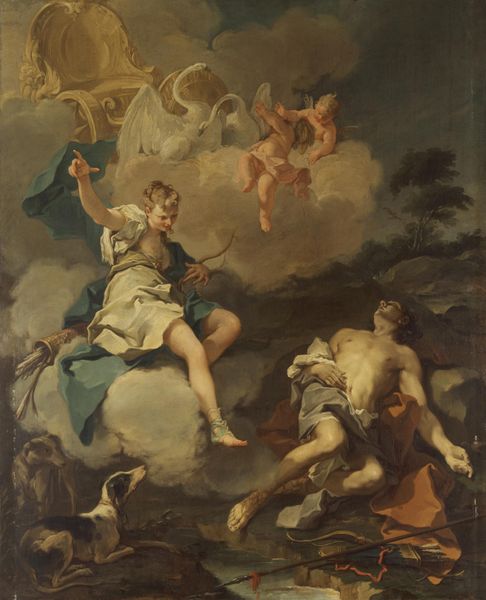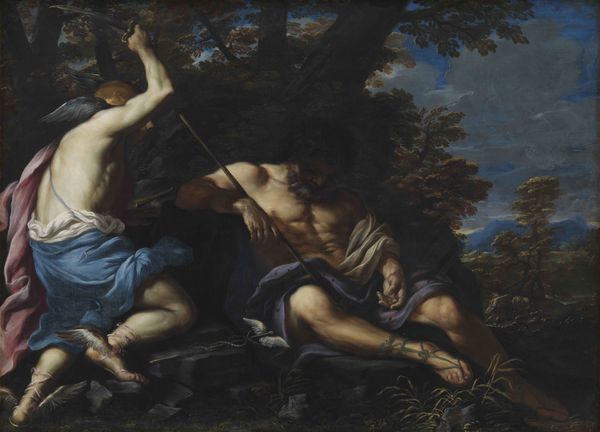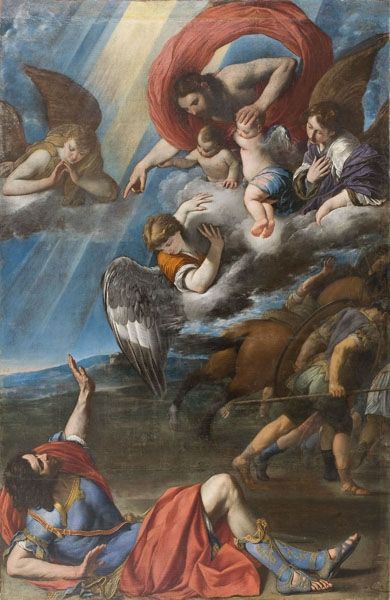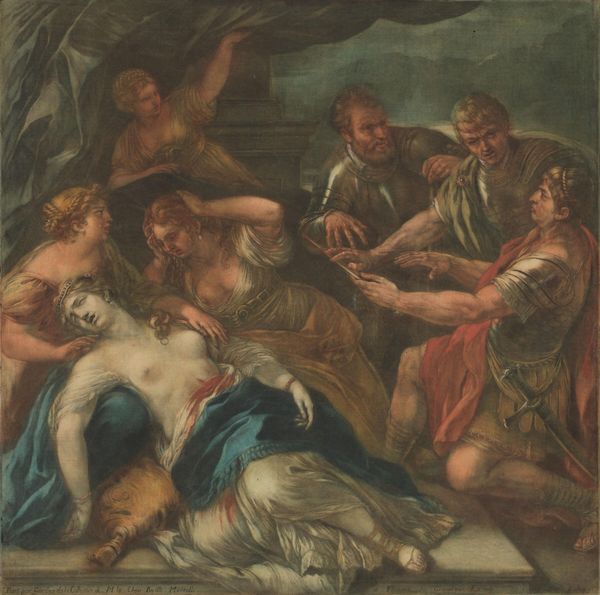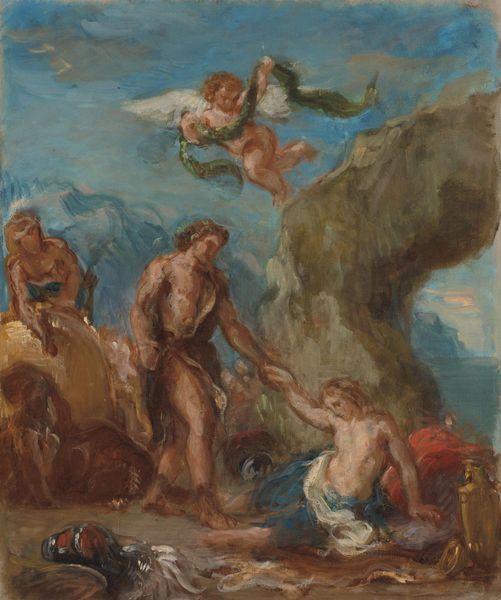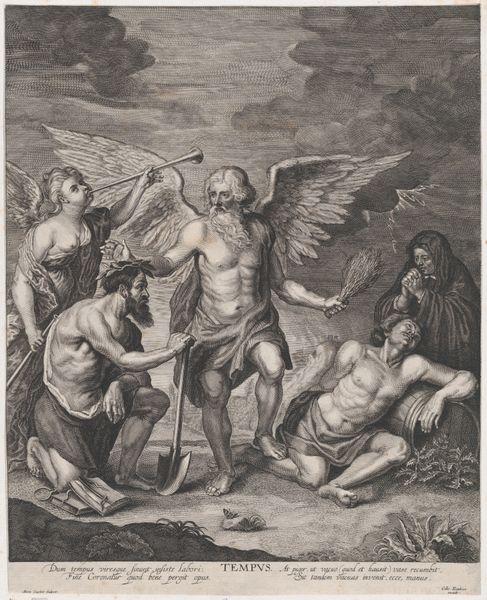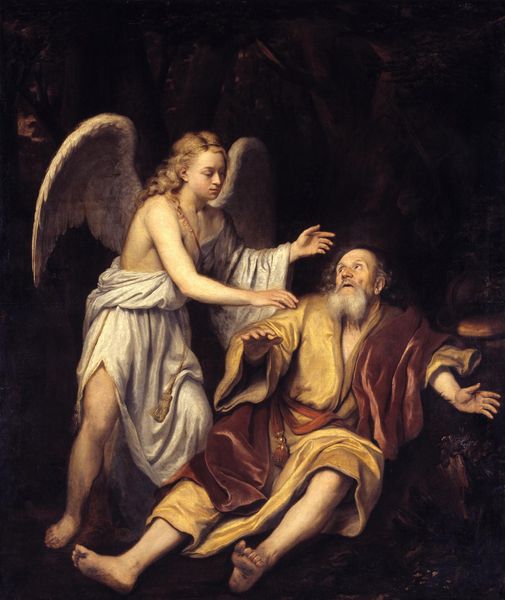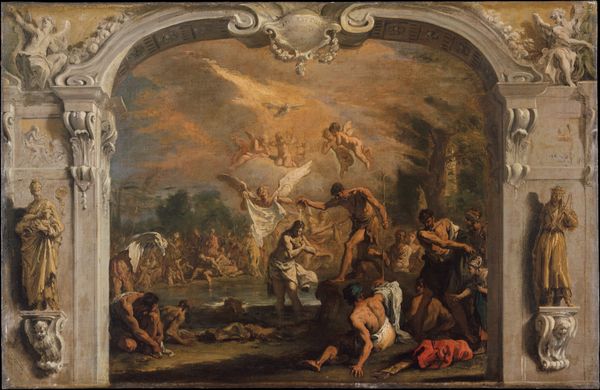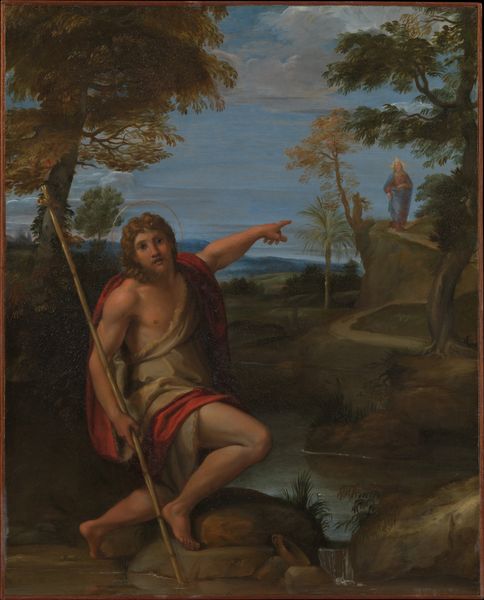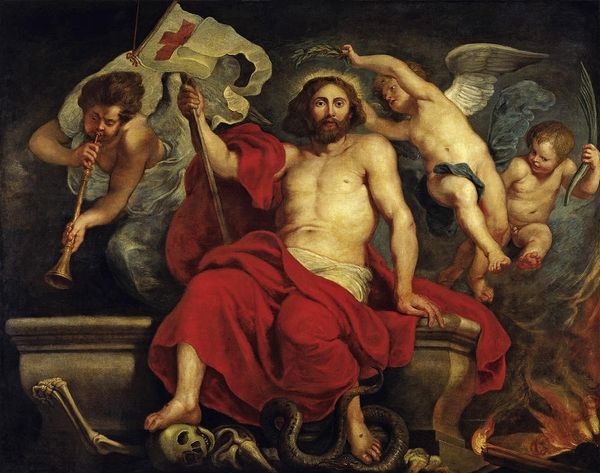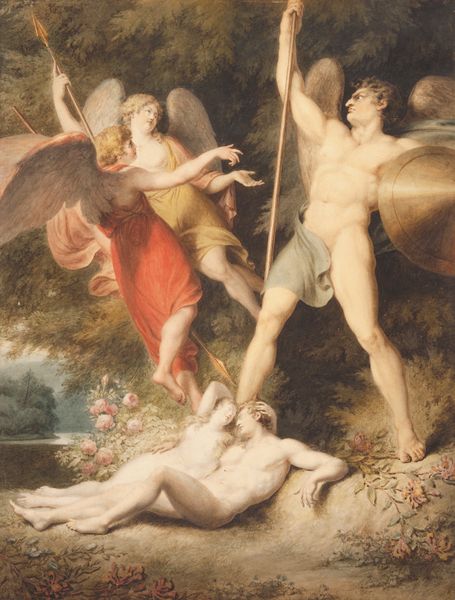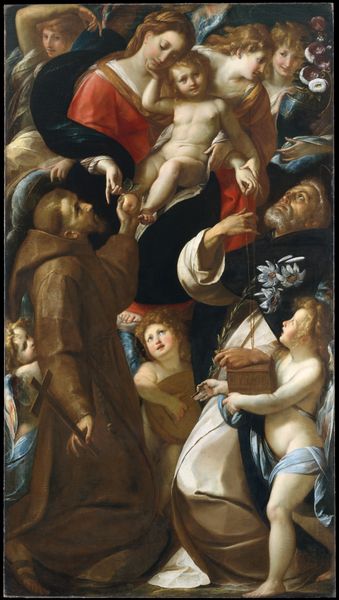
Engelen dragen het lichaam van Christus (Engelenpietà) c. 1587
0:00
0:00
painting, oil-paint
#
painting
#
oil-paint
#
mannerism
#
figuration
#
oil painting
#
history-painting
Dimensions: height 33.7 cm, width 26.6 cm
Copyright: Rijks Museum: Open Domain
Curator: Editor: Here we have "Engelen dragen het lichaam van Christus" ("Angels bearing the Body of Christ") also known as the "Angelenpietà," an oil painting by Bartholomeus Spranger, dating from around 1587. The subject matter feels both somber and oddly sensual given the rendering of the body. What's your take? Curator: For me, this work speaks volumes about the socio-economic context of its creation. The luxurious oil paints, the artist's technique – these are not neutral elements. Spranger's skill, supported by a patron, elevates a traditional religious scene. Think about the pigment itself; where did those colors come from? Who mined them? How does the medium shape the message? Editor: So you’re saying the very materials used, like the preciousness of oil paints, are part of the painting's meaning and reception? Curator: Exactly. And the mannerist style—exaggerated musculature, contorted poses—that isn't just aesthetic. It's a performance of status and artistry. Patronage drove that extravagance; a display of wealth and sophisticated taste disguised within a devotional subject. Consider too how this highly refined painting exists alongside other, more humble depictions of the same subject, potentially produced via very different workshop systems. What's valued and why? Editor: That's interesting! I never thought about the material wealth involved in creating something that's ultimately about sacrifice. Curator: Precisely! The contradiction itself becomes a crucial part of the analysis. Think about how art's materials and production are entangled with faith and commerce. Editor: It makes me wonder how different interpretations arise based on access to these kinds of materials. Thanks for illuminating this angle, seeing the art market’s involvement makes it richer. Curator: Gladly! Remember art never exists in a vacuum. The story behind it is held in its making and the exchange of that labor.
Comments
No comments
Be the first to comment and join the conversation on the ultimate creative platform.
